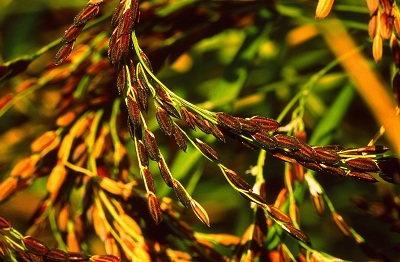Brown Rice, The Wonder-Grain

Lately, there have been many proponents for a no-grain diet. I totally agree that the basis of the standard American diet (high-glycemic, nutrient-void, refined grain products like white flour bread) is not a body-beneficial source of carbohydrate for anyone. What the no-grain diet crowd fails to address is the fact that the nutrient-dense, low-glycemic whole grains like brown rice, millet, amaranth and quinoa, form the basis of the diets of people all over the world who live strong, limber and happy very late into life.
There’s another factor that’s been overlooked. One of the basic tenants of both the ancient Asian and Indian systems of health, is that, because each of us has a different body type, different ancestry, and different metabolism, we each need different diet & lifestyle practices to feel our best. I’ve seen that some people get the highest level of energy and vitality from a diet of mostly proteins with vegetables, and that some of us thrive on the nutrient-dense whole grains with vegetables, and some of us do well eating both proteins and grains. It's a matter of experimenting with a particular diet for a period of time to see what gives you the highest level of energy and vitality.
No matter what type of diet you follow, it's essential for long-term health to eat mostly whole, organic, unprocessed (unpackaged) foods, just like our ancestors did, and just like indigenous people do all over the world today. What does a whole foods diet look like? Like this: 40-60% of the diet is seasonal, regional vegetables including the dark leafy greens. The other potion of the diet consists of the low-glycemic whole grains, high-quality grass fed meats & eggs, beans, fresh raw nuts & seeds, seasonal regional fruit, moderate amounts of raw dairy, whole sea salts, and extra virgin “unrefined” natural fats & oils.

Brown Rice is the most balancing whole grain for the widest range of body types. It has a wonderfully high amount of fiber which keeps the digestion moving smoothly. It reduces blood sugar levels and helps convert fat into lean body mass, improves blood circulation, regulates the pituitary gland, is high in magnesium and vitamin E, has over 70 different antioxidants and has numerous anti-aging effects, is immune system strengthening, and improves brain and nerve function. Brown rice reflects the blood’s perfect pH balance: 80% alkaline to 20% acid, so it helps the body re-gain that balance when eaten as the staple grain in the diet. I soak & simmer a small pot about twice a week to use as the base for most of my meals. I’ve even been known to take it in a jar with me to work, or even in my purse to a restaurant because it’s rarely offered anywhere. FYI, when buying dry brown rice to soak & simmer yourself, always get organic rice because conventionally it’s a heavily sprayed crop.
I hope you have lots of fun, delicious experiences learning to make perfect brown rice, and that you benefit in mind, body and spirit for years to come.
Recipes for you to enjoy:

